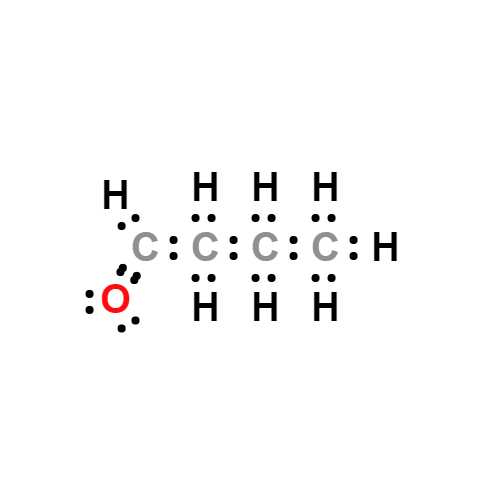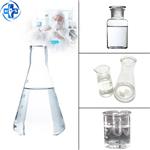
Butyraldehyde
- Product NameButyraldehyde
- CAS123-72-8
- CBNumberCB6852977
-
MFC4H8O
Lewis structure
- MW72.11
- EINECS204-646-6
- MDL NumberMFCD00007023
- MOL File123-72-8.mol
- MSDS FileSDS
Chemical Properties
| Melting point | -96 °C |
| Boiling point | 75 °C(lit.) |
| Density | 0.817 |
| vapor density | 2.5 (vs air) |
| vapor pressure | 90 mm Hg ( 20 °C) |
| refractive index | n |
| FEMA | 2219 | BUTYRALDEHYDE |
| Flash point | 12 °F |
| storage temp. | 2-8°C |
| solubility | water: soluble50g/L at 20°C |
| form | Liquid |
| color | Clear colorless |
| PH | 6-7 (71g/l, H2O, 20℃) |
| Odor | Pungent aldehyde; pungent and intense. |
| PH Range | 6-7 |
| Odor Threshold | 0.00067ppm |
| explosive limit | 1.7-11.1%(V) |
| Odor Type | chocolate |
Safety
| Symbol(GHS) |
 
|
|||||||||
| Signal word | Danger | |||||||||
| Hazard statements | H225-H319 | |||||||||
| Precautionary statements | P210-P233-P280-P303+P361+P353-P337+P313-P370+P378 | |||||||||
| Hazard Codes | F | |||||||||
| Risk Statements | 11-R11 | |||||||||
| Safety Statements | 9-29-33-S9-S33-S29-16 | |||||||||
| RIDADR | UN 1129 3/PG 2 | |||||||||
| WGK Germany | 1 | |||||||||
| RTECS | ES2275000 | |||||||||
| F | 13-23 | |||||||||
| Autoignition Temperature | 390 °F | |||||||||
| TSCA | Yes | |||||||||
| HS Code | 2912 19 00 | |||||||||
| HazardClass | 3 | |||||||||
| PackingGroup | II | |||||||||
| Hazardous Substances Data | 123-72-8(Hazardous Substances Data) | |||||||||
| Toxicity | Single-dose LD50 orally in rats: 5.89 g/kg (Smyth) | |||||||||
| NFPA 704: |
|
Preparation Products And Raw materials
Butyraldehyde Supplier
Global(441)Suppliers
| Supplier | Tel | Country | ProdList | Advantage | |
|---|---|---|---|---|---|
| -- | y.barysheva@ukrorgsynth.com | Ukraine | 6234 | 38 |




